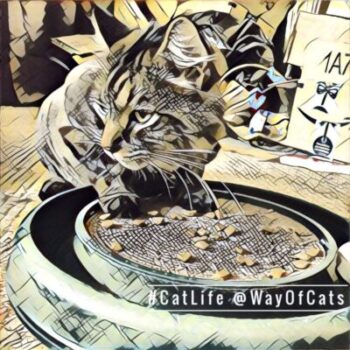What is your cat’s reaction when you attempt to add a new food to his diet? Do you get that look that says, “What is this?” Does your cat scratch at the floor in a symbolic attempt to cover the offending food? Why are cats picky eaters? Now, if it’s your dog, he’ll scarf up everything there and look around for more. Why are cats so different?
Several reasons can cause this behavior, so frustrating for you at times when you simply want your kitty to eat his meal without complaint. What do you feed kitty? You must be aware that a cat is an obligate carnivore, and must have meat for survival. Meat needs to make up more than 70% of his diet. His digestive system cannot properly digest plants. No vegan kitty here.
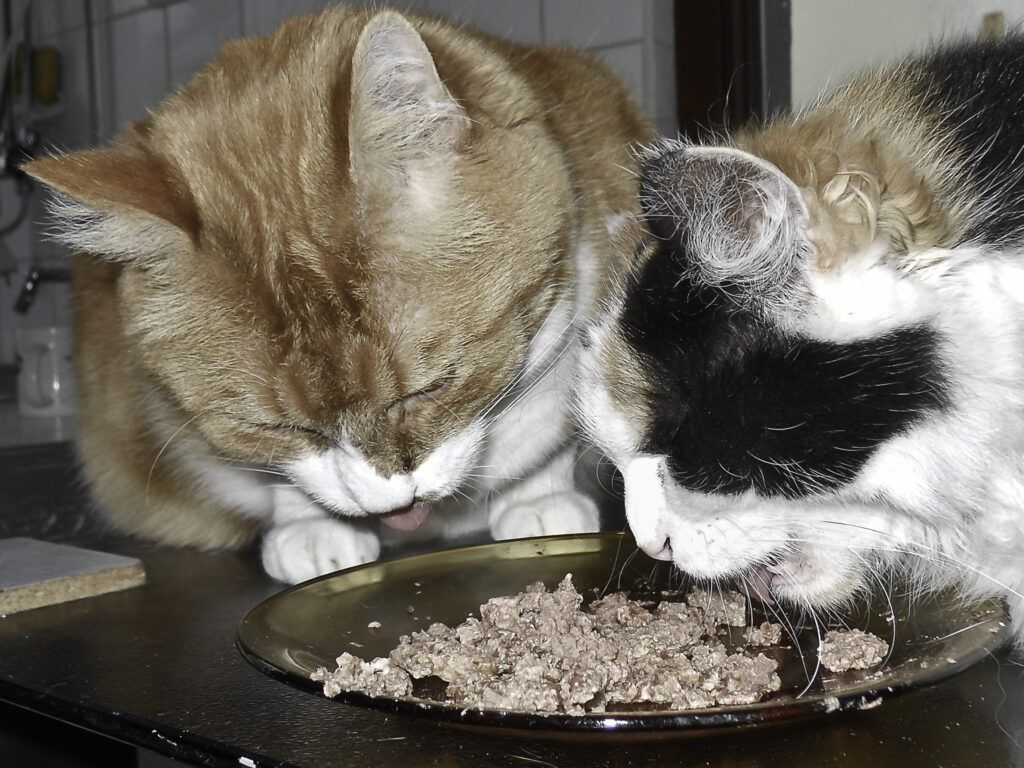
A Cat Belongs To The Hypercarnivore Group
He actually belongs to a small group known as “hypercarnivores.” This group includes such creatures as owls, snakes, spiders, and most sharks.
A cat’s taste buds contribute to this eating behavior. This animal has a different set of taste receptors compared to humans. Taste buds rank relatively. low in number, only about 470, compared to about 9,000 in a human. They are tuned to detect amino acids and compounds prevalent in meat, essential for his survival.
The Senses Play A Large Role
By contrast, dogs are omnivores, and have the well-earned reputation of being opportunistic scavengers. In contrast, kitty’s sense of taste causes more sensitivity to bitterness. The cat also lacks taste receptors for sweetness. He loves savory, rich, meaty flavors and likes to know that food is fresh. That’s why his diet in the wild consists of freshly killed small prey such as rodents and birds. The dog’s digestive system, being more robust, can handle a much wider variety of food. His shorter digestive tract moves food through his system more quickly, and his highly acidic system destroys pathogenic microbes. Kitty must remain more selective at mealtime.
You need to realize that a cat’s sense of smell also plays a role in determining what he will eat. As he can smell much better than we can, his interest in the food will be influenced by this sense. If the smell isn’t appealing the taste won’t matter.
The Role of Nutrition and Diet in Feline Picky Eating
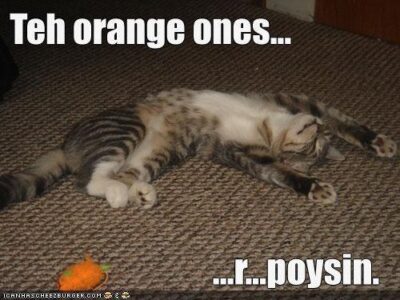
Cats have distinct nutritional needs and don’t pick a food simply because it is available. Their evolutionary heritage fine-tunes them to select food that keeps them healthy and thriving. Of course, proteins rank as the most important part of their diet. Carbohydrates don’t have the same importance as the cat lacks certain digestive enzymes that allow them to process the plant-based part of the menu.
Because of their evolutional heritage, they don’t pick their food based on whims. This evolutionary heritage fine-tunes them to select foods that keep them healthy and thriving. If kitty’s body recognizes the food as beneficial, he may become more inclined to eat it.
A cat’s hesitation to accept new food often ties back to dietary needs. Do remember that sudden changes in the food diet can backfire. New foods often require a gradual introduction before it becomes accepted.
Behavioral Factors Affecting a Cat’s Dining Choices
A cat’s eating behavior isn’t always about what’s on the plate. Sometimes, eating habits are deeply rooted in past experiences. Several factors can contribute to your kitty’s eating behavior. Consider the following:
Learned Behavior
Kittens learn from their mothers which foods are safe and which to avoid. Therefore, if you can, start when you just added a new kitten to the family. Introduce the young one to different flavors, textures, sizes, and shapes of food.
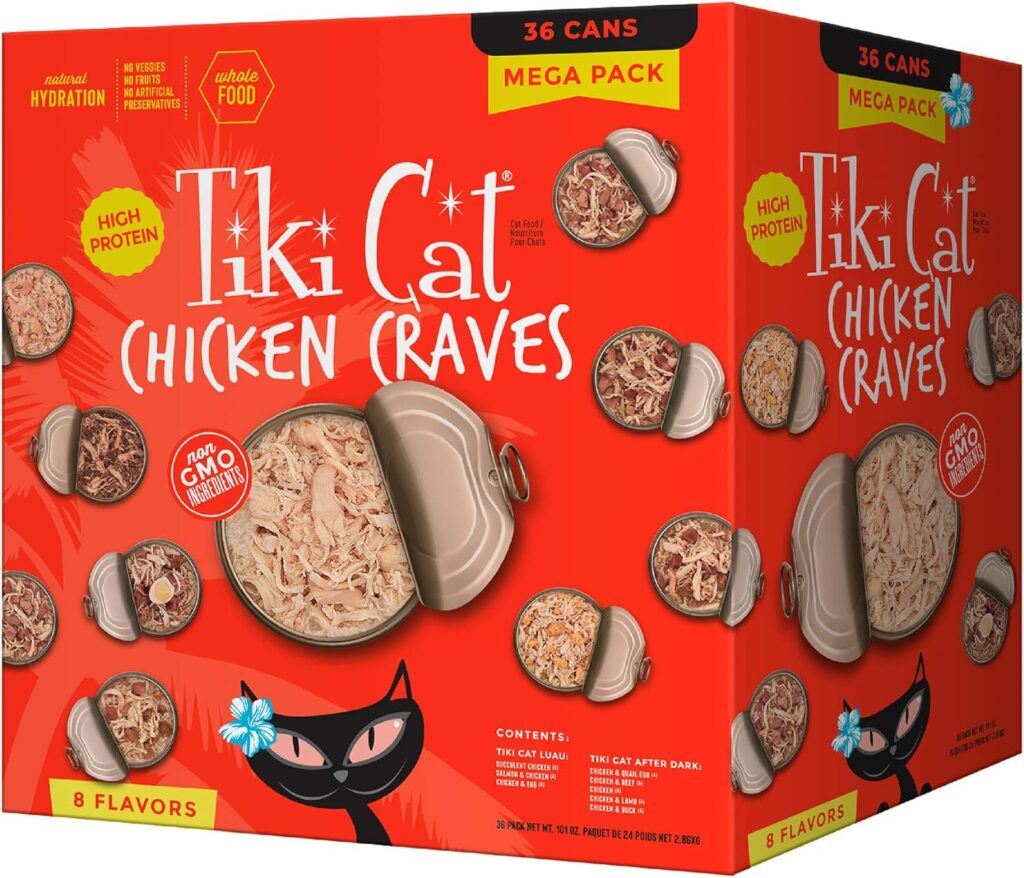
Later on, when you introduce a new food, your kitten will be more likely to accept the change.
Location
Avoid placing the food dish in these locations:
- By the litter box. This one makes sense. Would you want your dining area right next to your commode?
- High traffic area. A peaceful meal becomes more enjoyable, aids in digestion, and avoids unwanted distractions.
- Around other animals. Hey, this meal belongs to your kitty and does not need to become involved in a competition with another animal as to whom gets to eat it.
- Serving stale or rancid food or an unclean container. Would you dine at a restaurant that offered you food with these negative conditions? Kitty, as a family member, deserves the same consideration.
- Some cats do not want their food near the water bowl.
- If you have just moved, the dining area may require a time of adjustment.
Routine Provides Importance
Your kitty believes firmly in routine. Feed at the same time and in the same place every day. Sudden changes in time or location can throw off his eating regimen, and he may not eat for a meal or two.
Consistency also has importance. A cat can become accustomed to a certain bowl and a certain pattern that remains the same at each meal. Humor your kitty on this point.
Medical Issues
Certain health conditions can affect a cat’s eating habits. Dental disease can cause eating to become painful. With kidney disease, nausea can often dampen appetite. Arthritis may make it too painful to get up to eat. Nasal congestion may interfere with the all-important ability to smell food.
Variety Becomes The Dining Spice
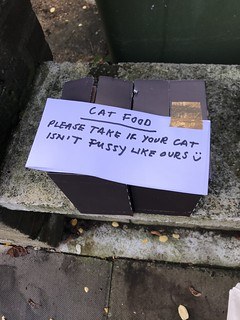
Some animals seem to find satisfaction in eating the same food, day in and day out. I don’t think I’ve ever had a cat who found consistent satisfaction in such sameness. Mocha certainly makes it plain that he likes variety. He might eat the same food for a very few days, but he seems to thrive on change.
Interesting — that preference for change does not seem to encompass his dry food. He likes the same thing every day. It’s with the wet food that he prefers change. Perhaps if he got only dry food he would tire of it. Perhaps, as he gets the dry food only when his wet food is finished, he considers it the dessert course. Cats are such baffling creatures!
Managing Picky Eaters: Tips for Cat Owners
Coping with your fussy eater can be baffling. The key remains respecting kitty’s unique palate, especially when introducing new, nutritious options. Practice your patience here.
When introducing a new food, start by mixing small amounts of it in with their old food. With any kind of food, make sure it is fresh and at the proper temperature. Warming food slightly may make it more appealing, as it will be a closer imitation of the fresh prey they catch in the wild.
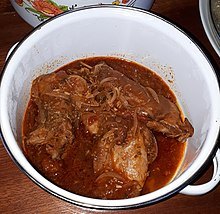
Does your cat like a shallow bowl? Most cats like to eat from a container wide enough to allow their whiskers room without bending them. Would kitty prefer to have food spread out on a flat surface? What about shape and texture? These are all factors to consider when trying to solve the fussy eater puzzle.
If you notice a dramatic weight change or if kitty consistently refuses food, by all means reach out to your vet. It’s important to ensure there’s no health problem that needs addressed.
Remember, your goal is not just to get kitty to eat, but you also need to ensure your furry friend is receiving the proper nutrients to support good health. Create a balance between catering to the cat’s selectiveness and providing a diet that’s both appealing and nutritionally complete.
References I used for this post:
https://www.petmd.com/cat/nutrition/why-are-cats-picky-eaters https://moderncat.com/undiscriminating-dogs-and-feline-foodies-why-cats-are-pickier-than-dogs

